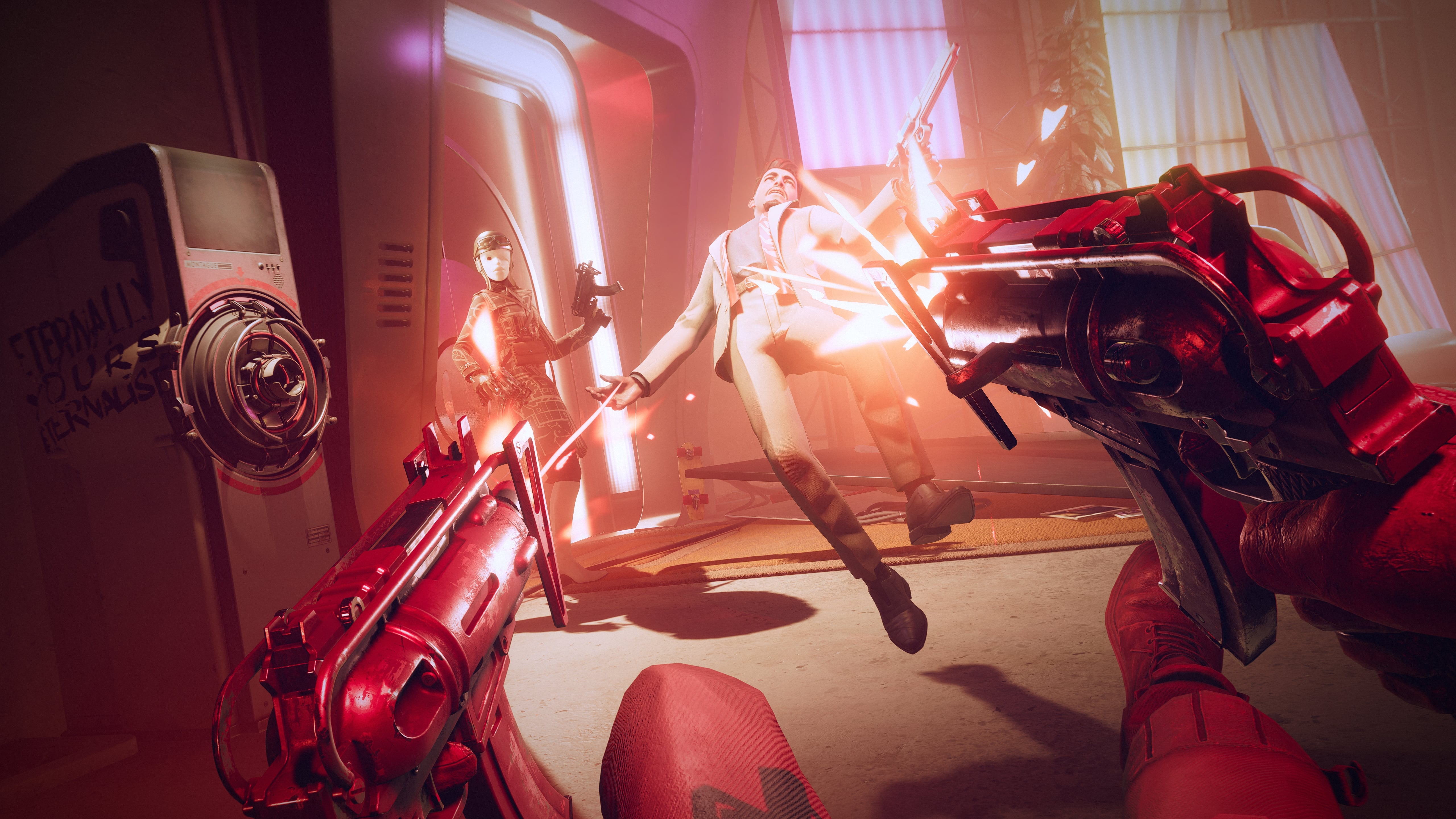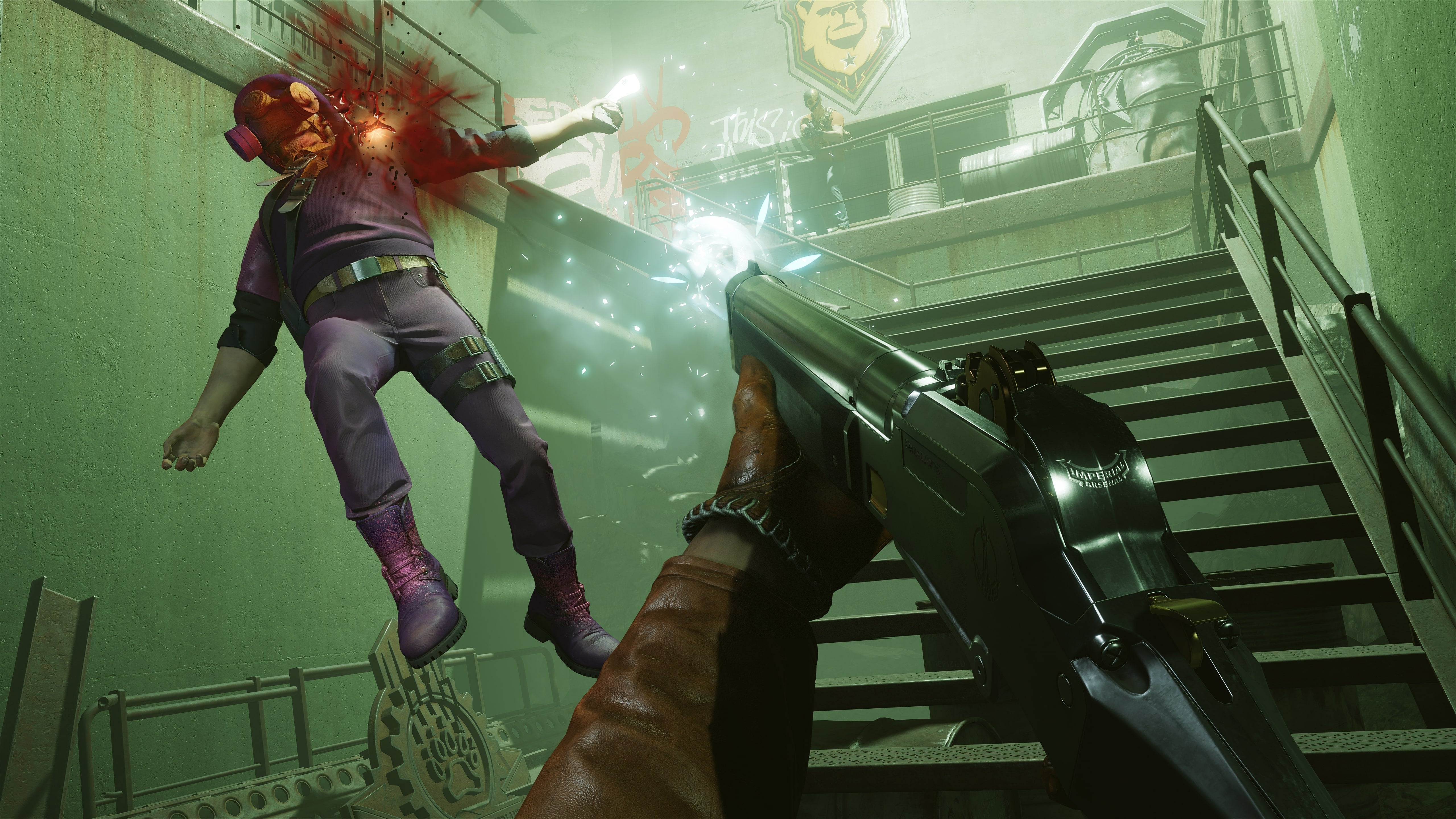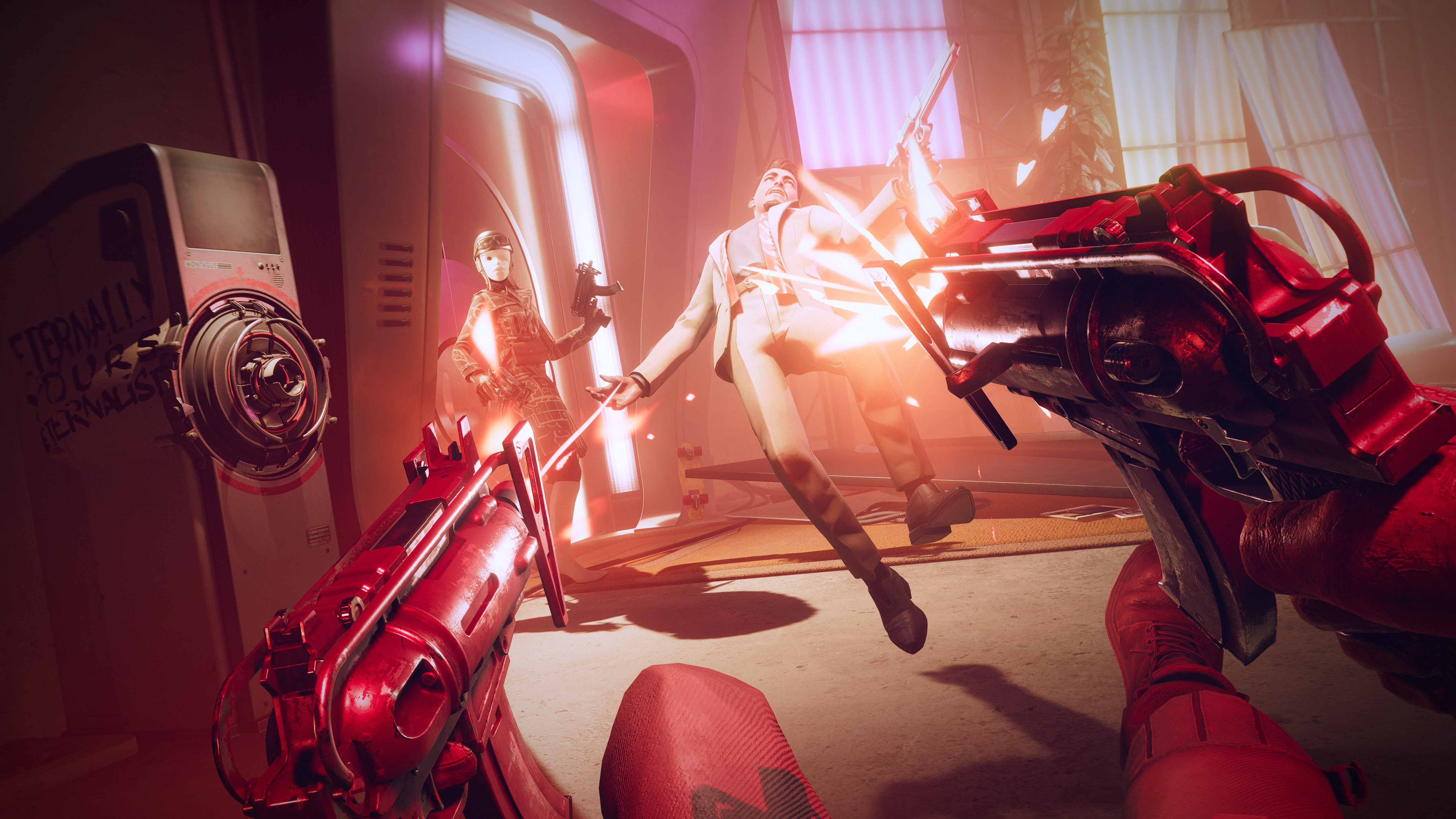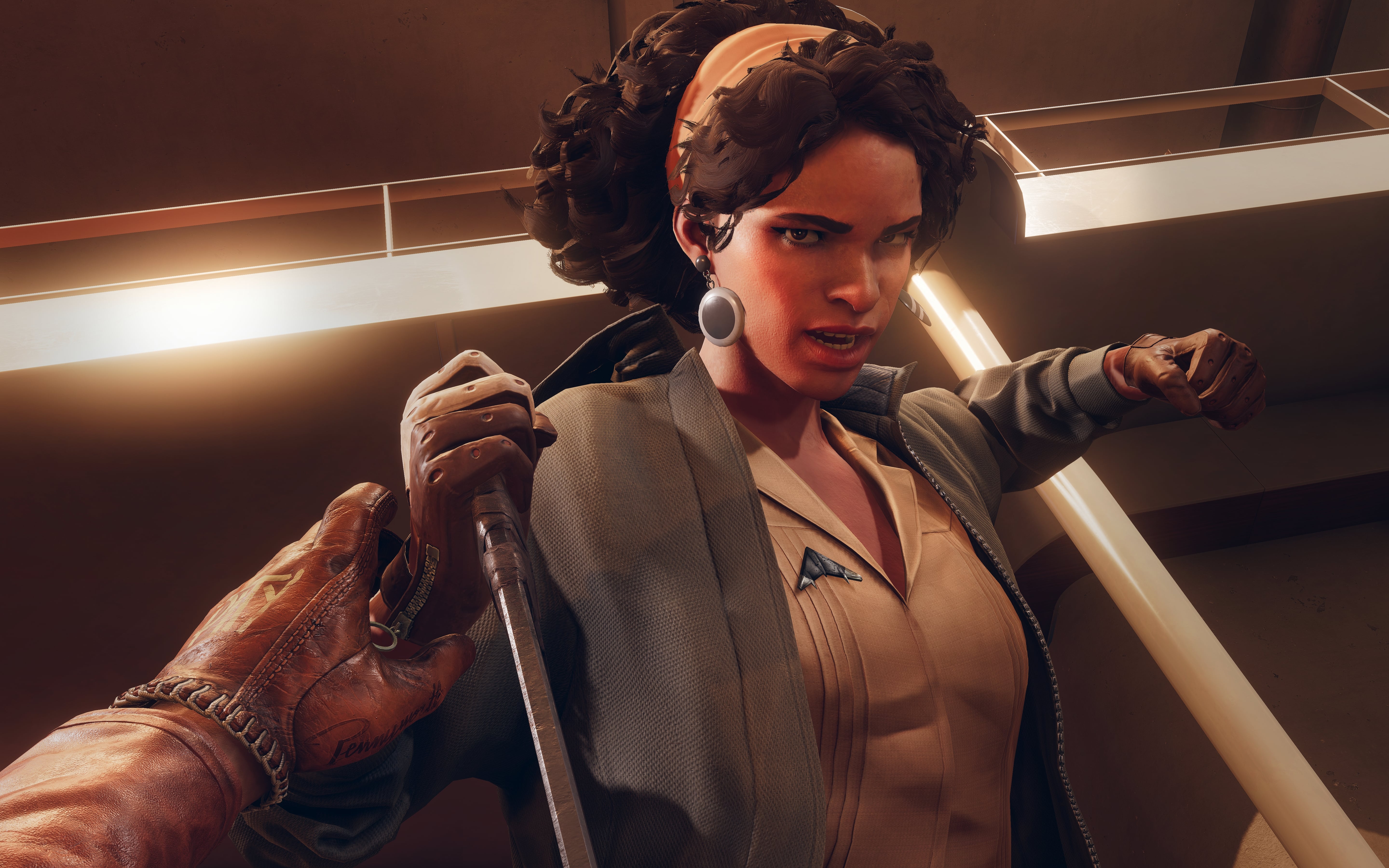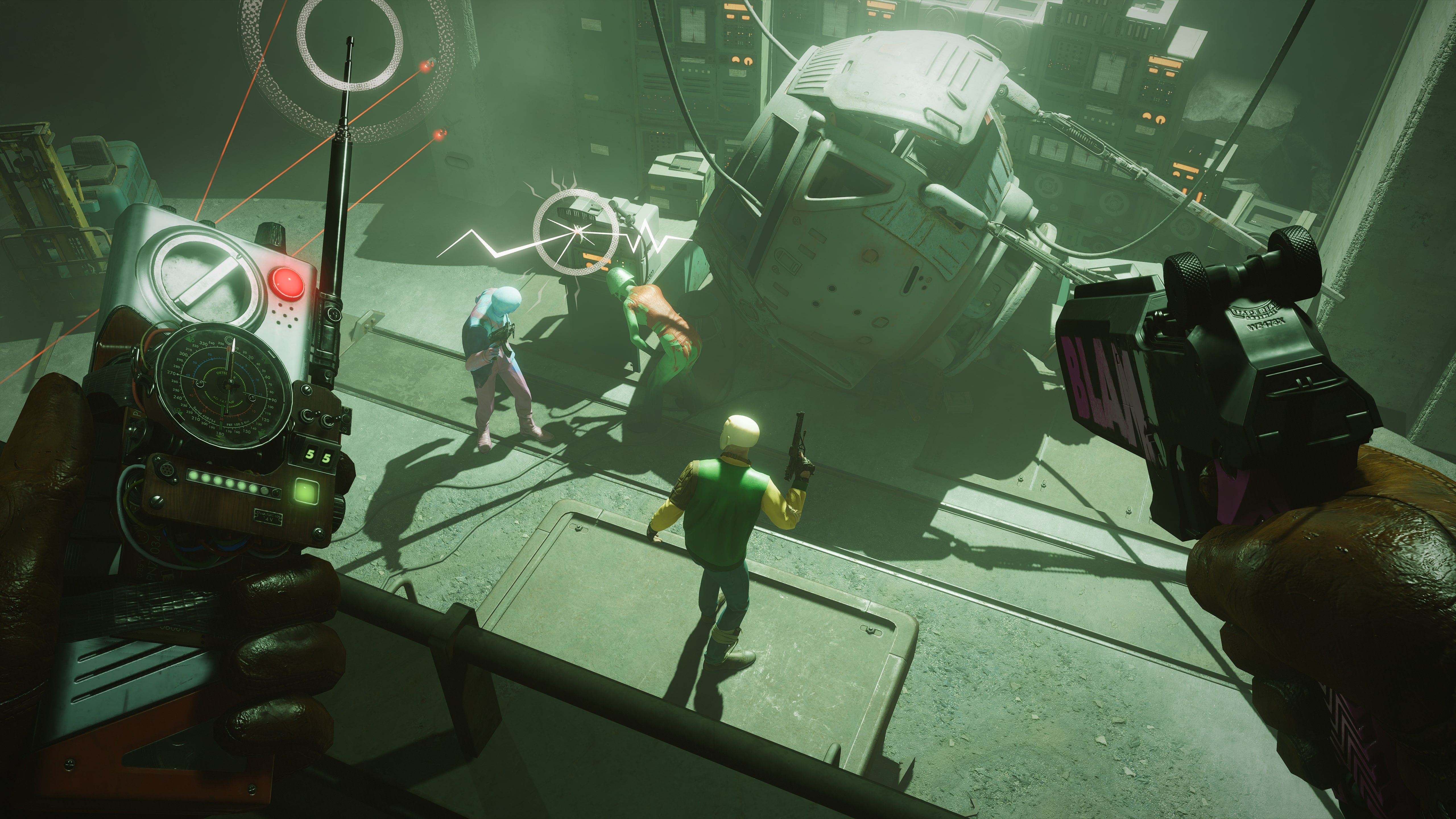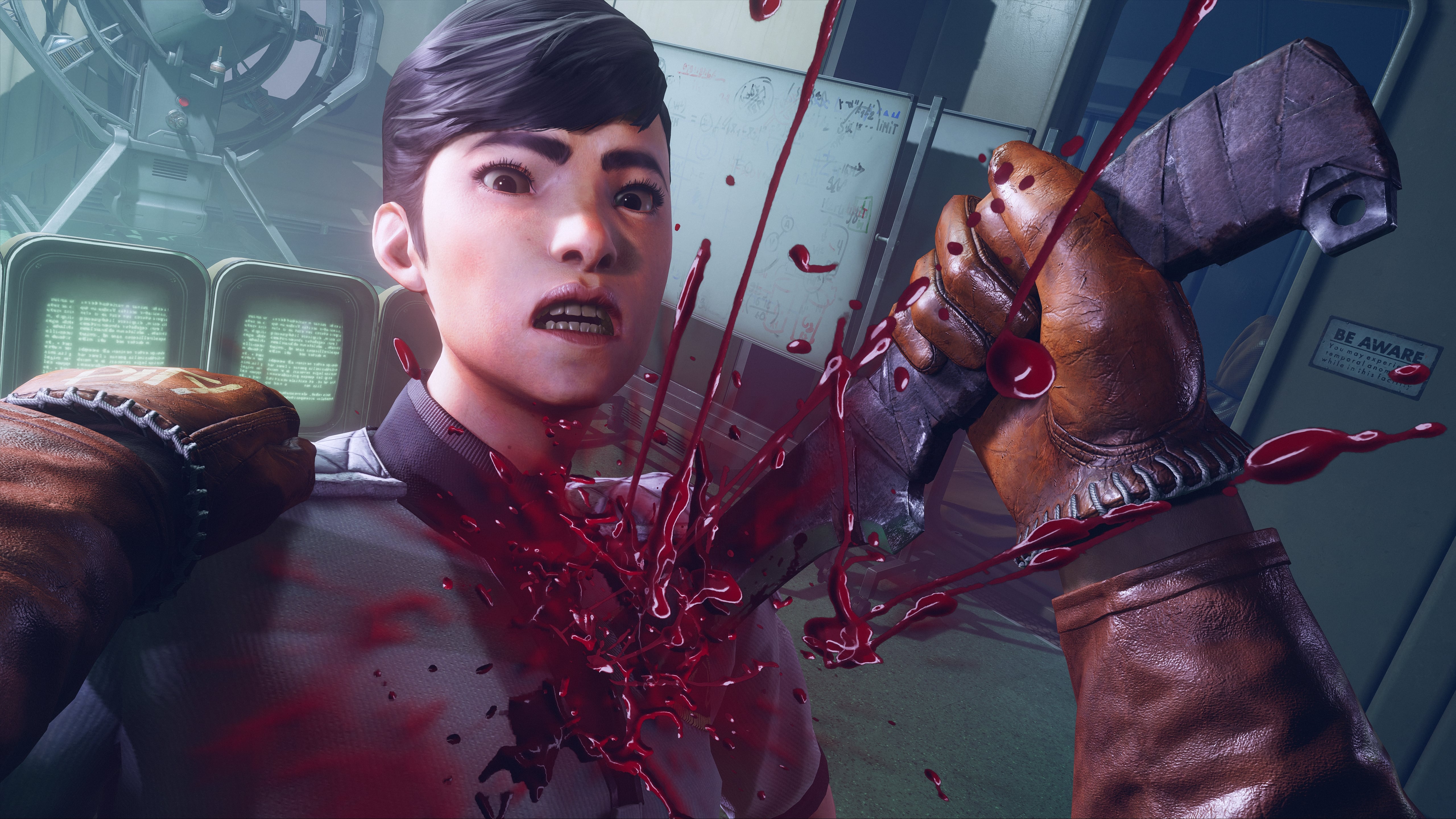The thing is - and I’m sorry Arkane, I know you tried your best to dissuade me, but this is just what we do - I don’t know how else you pin down this curious chimera of a game. Partly because so much of the pleasure of those first five hours is seeing how Deathloop assembles itself from all those disparate parts as its loop winds around itself, partly because by the time you’ve taken down a couple of the visionaries that are your marks and earnt some of their powers there’s so much in play that it’s something of a tangle. Mostly, though, it’s because Deathloop’s knotty enigma is one you should untangle yourself, because judging from the first five hours this really could be something special. This is, though, a very different experience to those we’ve seen from Arkane in the past. Yes, after those five hours you may well be using your recently acquired superpowers to blink from rooftop to rooftop, perhaps opting to sneak past guards or simply snapping their necks like Dishonored, and yes there’s some of that same pulpy kitsch from Prey - dialled up here to an enjoyably heady degree - but the balance, and the set-up, feels entirely different. First, a word on that set-up. You’re Colt, waking up blearily on some strange cold shore with not much more knocking around your head beyond a hangover - no recollection of who you are, where you are or why it is exactly that the entire island you’re stricken on seems hell-bent on killing you. If they succeed - or if you meet your end any other way - three times over, the loop begins afresh, Colt waking up once again on that chill beach with nowt more than a dry mouth and a migraine. So you push forward again into one of Deathloop’s four distinct districts, hopefully armed with something a mite more powerful than the shotguns, nailguns or bolt rifles you can pick up along the way - knowledge. Maybe it’s something as simple as the passcode for a locked door, or maybe something else - a new piece of intel that might send you on the trail of a new piece of gear, or some information as to the maneuvers of one of the eight Visionaries that are your ultimate marks. Which is when it gets more complicated still, with the only way to break the loop being to kill all eight of them in a single day. Already I’m sure you’ll be making connections of your own, picking up a bit of Hitman in the clockwork nature of your marks and their movements, The Outer Wilds in how you’re free to manipulate and manifest that clockwork in bold and fascinating ways, and then as soon as you’ve started to get your head around all that other elements from Soulsbourne and roguelikes are folded in - soon you’re able to infuse the weapons and abilities you pick up on each run with ‘residium’ so that you might hold on to them next time you wake up on that beach, and while all residium is lost upon death you can return to the place of your demise to pick it all up again. It is, in short, a lot. We refer to these games as a useful shorthand, I think, because when you put Deathloop’s make-up down in simple black and white it can come across as something of a scrawl - indeed, as you’re picking through the lists of intel and leads in the sometimes fussy menus, it can feel like one too. But while this is no doubt a very cerebral game, much like its predecessors from Arkane, it feels somehow lighter than what’s gone before. Indeed, for all the names that have been invoked when it comes to Deathloop - the Hitmans and Dark Souls and Returnals - it was a very different game that came to mind in so much of the moment to moment action. With its spy fiction underpinnings (by way of The Prisoner and Point Blank, of course), maps dense with multiple objectives and - most importantly - the sheer breeziness of it, it was GoldenEye that came to mind more often than other games when playing those first few hours of Deathloop. This is a pure power fantasy, so much noisier and chattier than Arkane’s previous games (with so much of that chattiness coming from the to-and-fro between Colt and antagonist Julianna - something that fizzes and pops and gives this complex game a very human heart). There’s much more urgency to its action too, injected by that Majora’s Mask time loop limitation of having just one day to do it all, but also by the forward momentum Deathloop’s arsenal loudly insists upon. Which is to say that the guns feel good in Deathloop. Really, really good. Cole’s starter SMG spits and buckles, helped along on PS5 by some fine DualSense support, with a tendency to jam mid gunfight if you’re still rocking one of the more basic models. The shotguns, meanwhile, boom with such screen-shaking exuberance that it seems frankly rude not to use them as and when you can. Whereas Dishonored always felt like it was funnelling you to a life in the shadows, Deathloop pushes you to the other extreme, encouraging you to go about your business with a bit more swagger and extravagance. It’s helped along by the fact that, in those first few hours at least, Deathloop is not a punishing game. Far from it, in fact - maps are wide open and dense, making sidestepping a mob a doddle (with lavish architecture and craggy rockfaces that you know will launch a thousand thinkpieces) while the AI seems suitably blunted by the fact that most of the NPCs in Deathloop are perpetually drunk, seemingly distracted by their own inebriation or strumming idly on guitars. It places the power firmly in your hands, perhaps re-emphasising the fact that the world in Deathloop is presented for you to toy with rather than be intimidated by. The real challenge, it would seem, is how you go about placing those pieces together, and how you align this dense little Rubiks Cube of a world until all the tiles - and all eight of those visionaries - click right where you want them. After those first few hours I’m at the point where the world has opened right up, where each four of those districts are available in each of their different times of day and where the possibilities and permutations are threatening to become something of a headache. Up to this point, though, Deathloop’s made sense of its dazzling array of components, and held them together with an impeccable sense of style. There’s a danger it might end up tying itself in knots, though at present it seems composed enough to help guide its players through the tangle. After those first few hours, as well, I can see why Arkane politely asked to look past the obvious comparisons, because while Deathloop might be built from familiar parts, it’s quite unlike anything I’ve ever played.
